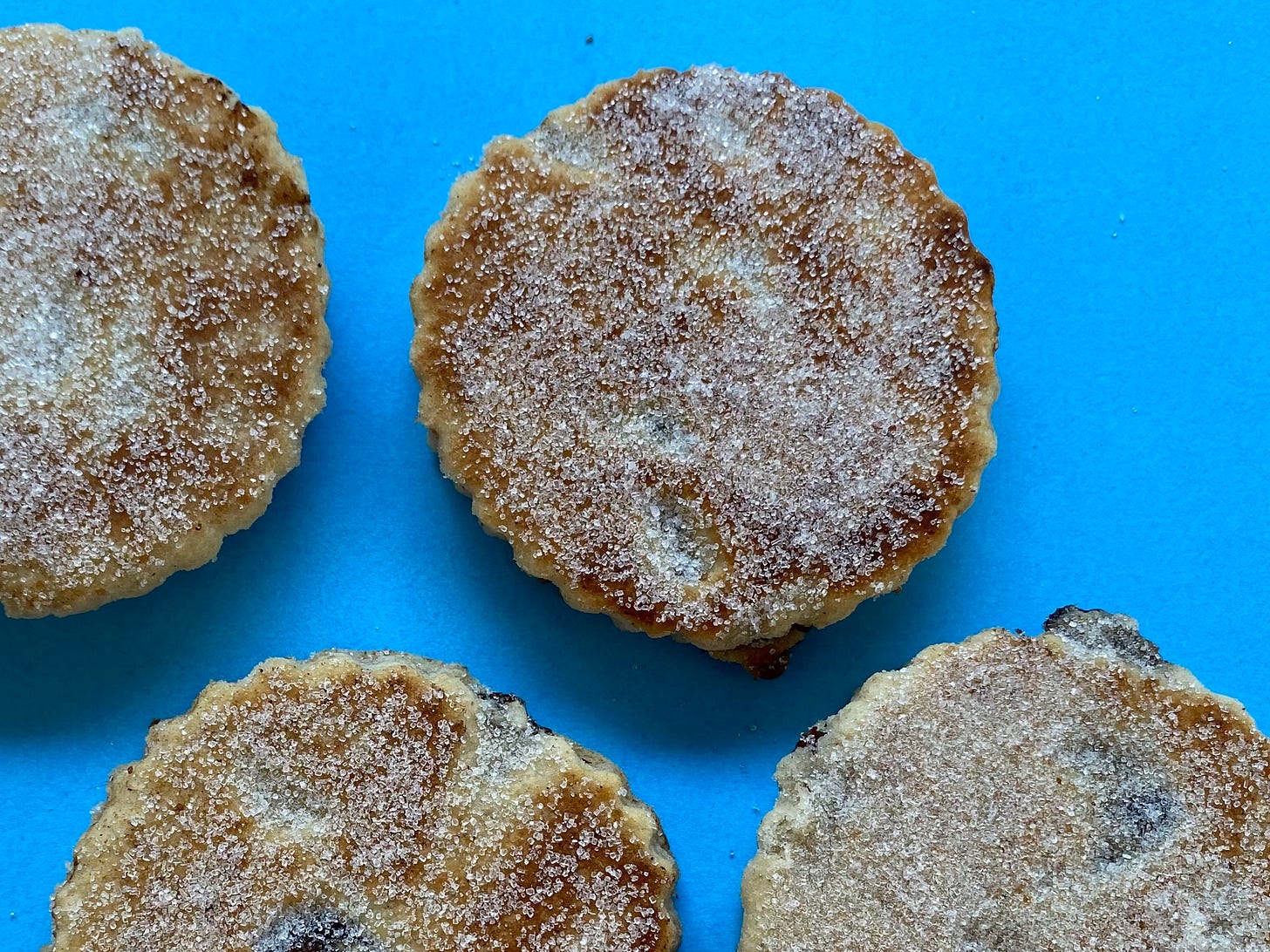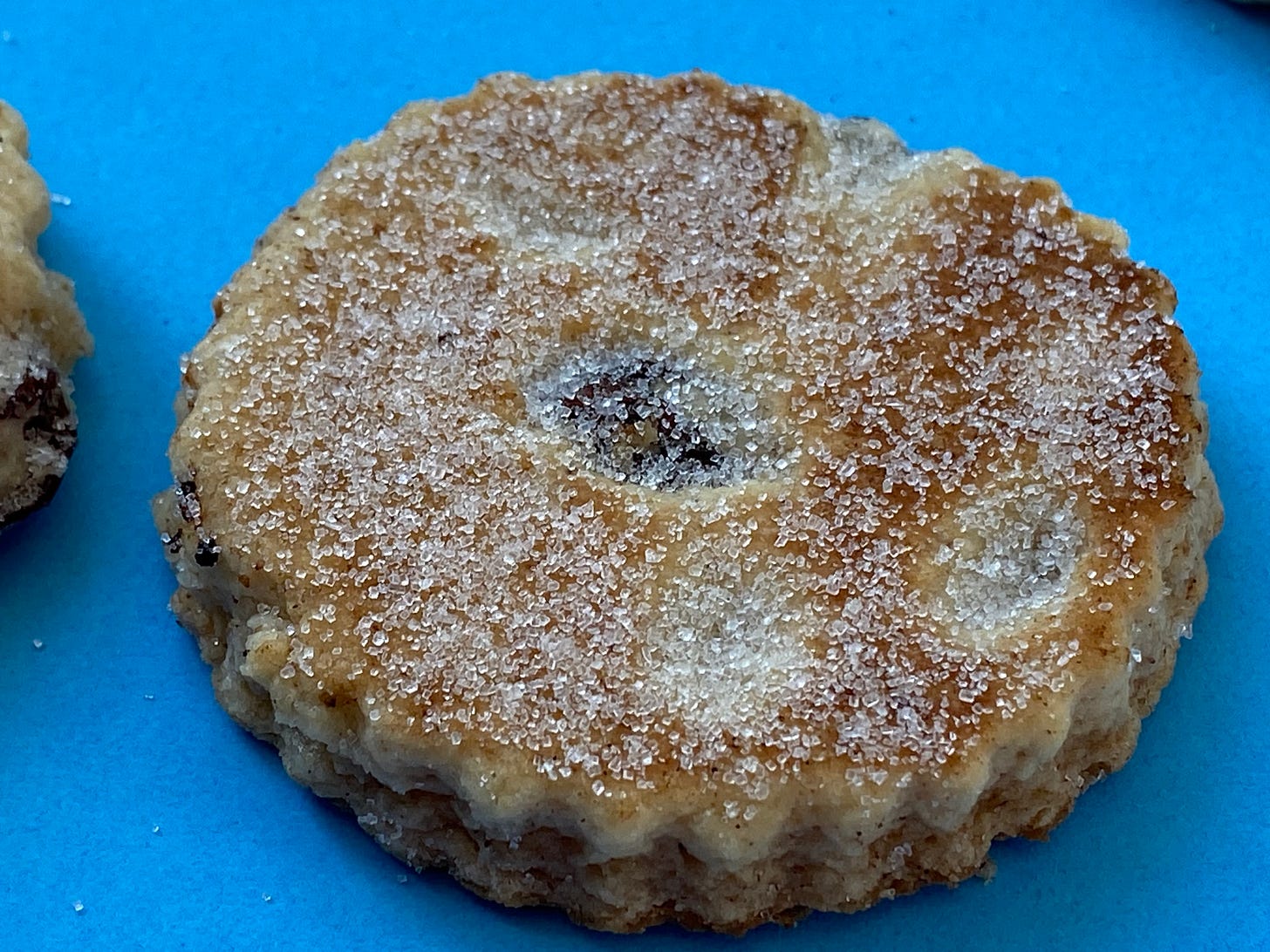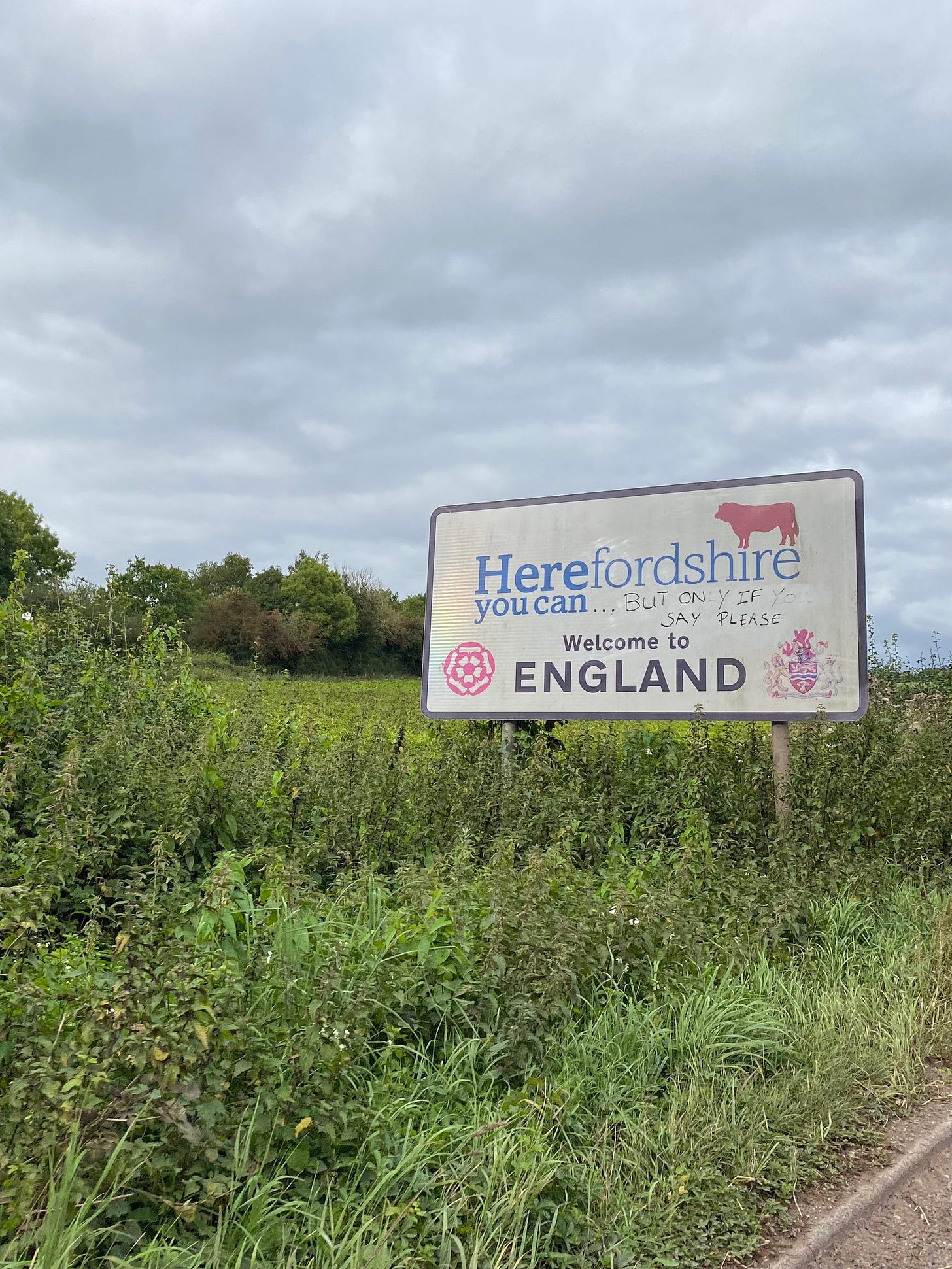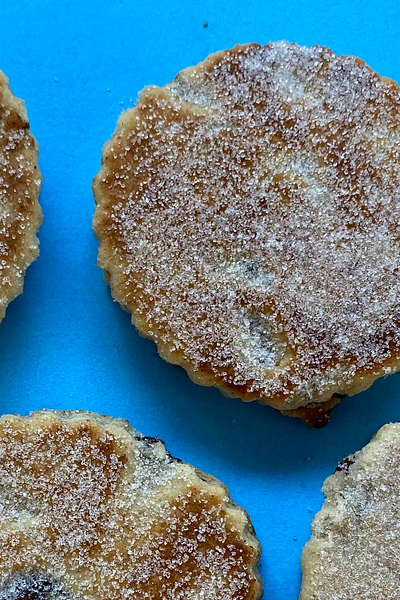I’ve been going to Britain at least once or twice a year for more than 30 years, and yet this year was the first I ate a Welsh cake. I instantly fell for the dense, yet delicate cakes dotted with dried currants and sprinkled with sugar. I made up for lost time by eating them daily on my trip to the UK last week.
Welsh cakes, it turns out, can be found in any English or Welsh supermarket next to the scones and crumpets, and they are almost a cross of the two. Welsh cakes have the texture of scones, but are only about a quarter-inch tall and cooked on the stove in a pan or on a griddle, like a crumpet. They are subtly spiced with a mix of cinnamon, ginger and nutmeg and are best eaten warm—and even better with a smear of salted butter.
My in-laws live in the Golden Valley of Herefordshire, a spectacular, unspoiled part of England that has been Welsh and English on and off since the 6th century. Indeed, there is still a law on the books in Herefordshire that allows an Englishman to shoot a Welshman with bow and arrow if he enters Hereford Cathedral.
Wales is only 15 miles from where we stay in England, and you’d think one might not notice a change crossing the border, but I swear it looks different. The obvious giveaways are the signs in Welsh and English, but to me, the land changes. The greenery intensifies and the mountains become more dramatic as you head closer to the Bannau Brycheiniog National Park. These mountains were known as the Brecon Beacons until April of this year when the Welsh government changed the scenic area’s name back to the original Welsh. Petty-minded Prime Minister Rishi Sunak felt it necessary to tell the press that he would still refer to the mountains as “The Brecons.” Meh to you, PM.
Too many travelers to Britain don’t consider Wales as a destination. That’s a mistake. Trite but true, there is so much to see and do: Cardiff (important for Dr Who and Torchwood nerds, um, fans!), the Pembrokeshire cliffs and coastline, Snowdonia, incredible castles such as Raglan with its intact kitchen ovens and moat, and many places of historical interest dotted around the countryside, from the Roman settlement remains in Usk, to the fascinating (I swear) Big Pit Coal Mining museum. Oh, and plenty of dragons.
Make yourself a Welsh cake or 16 and maybe turn on an episode of “Gavin and Stacey,” (which includes a young James Corden) and plan your trip.
Welsh Cakes
Makes 18 2 1/2-inch cakes
What You’ll Need:
1 3/4 cup plus 2 tablespoons (225 grams) all-purpose flour
1 teaspoon baking powder
1/2 teaspoon salt
1/2 teaspoon pumpkin pie spice (or a mixture of cinnamon, ginger and nutmeg)
1/2 cup (100 grams) granulated sugar, plus more for sprinkling after baking
7 tablespoons (100 grams) cold butter, cut up into 16 pieces
1 large egg, beaten
2 tablespoons (with one on standby if necessary) milk
1/3 cup (50 grams) dried currants or 1/3 cup (40 grams) raisins
What You’ll Do:
In a large bowl, whisk together the flour, baking powder, salt, spice mixture and sugar.
Whisk together the beaten egg with 2 tablespoons of milk and set aside.
Toss the pieces of butter in the flour blend, then using your cold and clean hands, rub in the butter until the mixture looks like wet sand. There should be no large chunks of butter visible.
Toss in the currants/raisins. Pour the egg and milk over the top of the dough and using a large spoon or silicone spatula, fold in the liquid. Add another tablespoon of milk if the dough seems too dry. Bring the dough together into a ball with your hands.
On a floured surface, roll out the dough until it’s 1/4-inch thick, and cut out rounds using a 2 1/2-inch cookie cutter (or the closest approximation you have).
Heat a cast iron pan or griddle over medium heat. Grease the pan with butter (I used about 1 tablespoon for the batch I made on my large pancake griddle), and cook the cakes for about 3 minutes on each side. The exteriors should be light golden and the center of the cake firm. Remove to a cooling rack and immediately sprinkle with granulated sugar. Serve warm. They are nice with butter. They are also nice cold and will stay fresh for about a week in an airtight container.
Have you ever been to Wales? What are you doing for Labor Day weekend?
This substack is a reader-supported publication. If you’re able, paying for a subscription helps pay for biscuits, crumpets and groceries for recipe-testing, recipe development and supports me—a freelance writer. The pay scale for journalists and writers has not kept up with the cost of living. That’s why having a substack newsletter has become such a terrific venue for so many writers. Best of all, however, it puts me, Bosco, Calvin and Clyde in touch with our readers like never before. Thank you.
Can’t afford a subscription? Do the next best thing and give free subscriptions to all your friends. The more the merrier.










Marissa, you are a Wale of a delectable writer!
I'll have to add Wales to the itinerary on a future trip—never enough time when I get to the UK. As for Welsh Cakes—they look intriguing. Will probably leave out the currents, though, to save myself the trouble of picking them out after baking.